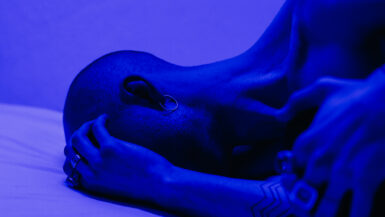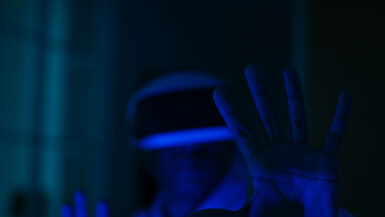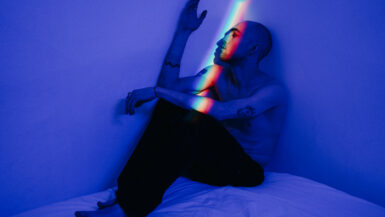In today’s fast-paced, technology-driven world, the impact of blue light exposure on our sleep and productivity has become a topic of increasing concern. With the growing use of electronic devices such as smartphones, tablets, and computers, we are constantly exposed to artificial blue light, which may have adverse effects on our health and overall well-being. This article delves into the relationship between blue light exposure and sleep disorders, examining the underlying scientific principles and offering practical solutions to mitigate the negative consequences. By understanding the implications of blue light on our sleep patterns and daily productivity, we can make informed choices and take necessary steps to preserve our health in the digital age.
Blue Light Blocking Strategies for Better Sleep
As we continue to explore the impact of blue light exposure on our sleep, it’s essential to understand practical ways to mitigate these negative effects. In this section, we will discuss various strategies for blocking blue light, allowing for a better night’s sleep and improved overall well-being. By incorporating these tips into our daily routines, we can take control of our exposure to blue light and significantly improve our sleep quality.
Establish a Digital Curfew
One of the most effective ways to limit blue light exposure is by establishing a digital curfew. This involves setting a specific time in the evening when all electronic devices are turned off, allowing our bodies to naturally prepare for sleep. Experts recommend shutting down devices at least an hour before bedtime to give our brains a chance to wind down and produce the sleep hormone melatonin. By doing so, we can significantly reduce the impact of blue light on our sleep patterns.
Invest in Blue Light Blocking Glasses
Another practical solution is the use of blue light blocking glasses. These specialized lenses filter out blue light, reducing the strain on our eyes and minimizing its impact on our sleep. Wearing these glasses while using electronic devices, especially in the evening, can help promote better sleep and overall health. Be sure to consult with a healthcare professional or check out this comprehensive guide for more information on the benefits of blue light blocking glasses.
Adjust Device Settings
Many electronic devices now come with built-in settings to minimize blue light emission. Features such as Night Shift on iOS devices and Night Light on Android devices allow users to adjust the color temperature of their screens, reducing the amount of blue light emitted. By taking advantage of these settings, we can significantly decrease our exposure to blue light, especially during the evening hours.
Use Apps and Software
In addition to built-in settings, there are numerous apps and software available to help reduce blue light exposure. Programs such as f.lux for computers and Twilight for Android devices can automatically adjust screen color temperature based on the time of day. By utilizing these tools, we can create a more sleep-friendly environment when using electronic devices.
Create a Sleep-Friendly Environment
Finally, creating a sleep-friendly environment can go a long way in mitigating the effects of blue light exposure. This includes dimming the lights in the evening, using warm-colored light bulbs, and avoiding the use of electronic devices in the bedroom. By establishing a calm and relaxing atmosphere, we can encourage better sleep and minimize the impact of blue light on our sleep patterns.
By implementing these blue light blocking strategies, we can take active steps toward improving our sleep quality and overall well-being. It’s crucial to recognize the impact of blue light exposure on our lives and take necessary precautions to protect our health in the digital age.
Improving Productivity through Healthy Sleep Habits
Although blue light exposure can negatively impact sleep quality, it’s essential to recognize that we can improve our productivity by fostering healthy sleep habits. In this section, we will discuss several strategies to promote restorative sleep, which can boost our daily performance and overall well-being. By prioritizing sleep hygiene and implementing these practices, we can mitigate the effects of blue light exposure and enhance our productivity levels.
Establish a Consistent Sleep Schedule
One of the most effective ways to improve sleep quality is by establishing a consistent sleep schedule. This involves going to bed and waking up at the same time every day, even on weekends. By maintaining a regular sleep pattern, our bodies can better regulate their internal clocks, making it easier to fall asleep and wake up feeling refreshed.
Develop a Relaxing Bedtime Routine
Creating a soothing bedtime routine can help signal to our bodies that it’s time to wind down and prepare for sleep. This might include activities such as reading a book, taking a warm bath, or engaging in relaxation techniques such as meditation or deep breathing exercises. By promoting relaxation before bedtime, we can counteract the stimulating effects of blue light exposure and encourage a more restful night’s sleep.
Optimize Your Sleep Environment
The quality of our sleep environment plays a significant role in our ability to fall and stay asleep. Ensure your bedroom is conducive to sleep by maintaining a cool and comfortable temperature, investing in a supportive mattress and pillows, and minimizing noise and light disturbances. Additionally, consider removing electronic devices from the bedroom to further reduce blue light exposure and create a more tranquil sleep setting.
Pay Attention to Diet and Exercise
Our daily habits, including diet and exercise, can significantly impact our sleep quality. Consuming a balanced diet and avoiding heavy meals and stimulants such as caffeine and nicotine close to bedtime can promote healthier sleep patterns. Regular physical activity has also been shown to improve sleep quality; however, try to schedule exercise earlier in the day, as exercising too close to bedtime can have a stimulating effect.
Manage Stress and Anxiety
Lastly, managing stress and anxiety is crucial for achieving restorative sleep. Chronic stress and anxiety can interfere with our ability to fall asleep and stay asleep, leading to decreased productivity during the day. Implementing stress-reducing techniques, such as mindfulness practices, journaling, or seeking professional help, can significantly improve our sleep quality and enhance our daily performance.
By prioritizing healthy sleep habits and taking active steps to mitigate the impact of blue light exposure, we can significantly enhance our productivity levels and overall well-being. It’s vital to recognize the importance of sleep in our daily lives and make the necessary adjustments to protect our health and achieve optimal performance.
Effects of Blue Light on Sleep Patterns
Blue light exposure has been shown to significantly affect our sleep patterns, leading to disruptions in our natural sleep-wake cycles and potentially contributing to sleep disorders. In this section, we will delve deeper into the ways blue light affects our sleep and discuss the potential consequences of prolonged exposure to artificial blue light sources. By understanding these effects, we can make informed decisions about our screen time and digital habits, ultimately promoting healthier sleep patterns and overall well-being.
The Suppression of Melatonin Production
Melatonin is a hormone produced by the pineal gland that helps regulate our sleep-wake cycles. As daylight diminishes in the evening, melatonin production increases, signaling to our bodies that it’s time to prepare for sleep. However, blue light exposure, particularly in the evening, has been shown to suppress melatonin production, making it more challenging to fall asleep and stay asleep throughout the night. This disruption in melatonin levels can lead to difficulty falling asleep, insomnia, and an overall decrease in sleep quality.
Disturbance of Circadian Rhythms
Our circadian rhythms are internal 24-hour cycles that govern various physiological processes, including our sleep-wake cycles. Exposure to blue light, particularly at night, can disrupt these rhythms by tricking our bodies into thinking it’s still daytime. This confusion can lead to difficulty falling asleep, fragmented sleep, and daytime sleepiness, ultimately affecting our overall sleep patterns and ability to function optimally during the day.
Reduced Sleep Duration and Quality
Prolonged exposure to blue light, especially during the evening hours, has been linked to reduced sleep duration and quality. Studies have shown that individuals who use electronic devices before bedtime tend to experience shorter sleep duration, increased sleep latency (the time it takes to fall asleep), and more frequent awakenings during the night. These disruptions in sleep patterns can lead to chronic sleep deprivation, which has been associated with various health issues, including obesity, cardiovascular disease, and impaired cognitive function.
Potential Link to Sleep Disorders
While more research is needed to establish a direct causal relationship, there is growing evidence to suggest that prolonged exposure to blue light may contribute to the development of sleep disorders. Conditions such as insomnia, delayed sleep phase syndrome, and even sleep apnea have been linked to disruptions in circadian rhythms and melatonin production, both of which can be affected by blue light exposure. By addressing the impact of blue light on our sleep patterns, we can potentially reduce the risk of developing sleep disorders and improve our overall sleep health.
As we become more aware of the effects of blue light on our sleep patterns, it is crucial to take action to minimize these negative impacts. By implementing strategies to reduce blue light exposure, particularly in the evening, we can promote healthier sleep patterns and improve our overall well-being. Taking control of our digital habits and making conscious choices about our screen time can lead to better sleep quality and a more balanced lifestyle in our increasingly connected world.
Blue Light Exposure and Circadian Rhythm Disruption
The influence of blue light exposure on our circadian rhythms is an area of growing concern, particularly given the prevalence of digital devices in our daily lives. In this subsection, we will explore the ways in which blue light exposure can disrupt our natural sleep-wake cycles and discuss the potential implications for the development of sleep disorders. By recognizing the impact of blue light on our circadian rhythms, we can take proactive steps to protect our sleep health and minimize the risk of sleep-related issues.
The Science Behind Circadian Rhythms
Circadian rhythms are 24-hour cycles that regulate various physiological processes, including our sleep-wake cycles. These rhythms are primarily controlled by the suprachiasmatic nucleus (SCN), a group of cells in the hypothalamus that act as our internal clock. One of the primary cues for the SCN is light exposure, particularly the blue light wavelength, which is detected by specialized cells in the retina called intrinsically photosensitive retinal ganglion cells (ipRGCs).
How Blue Light Disrupts Circadian Rhythms
Exposure to blue light during the day is beneficial, as it helps maintain alertness and supports our natural sleep-wake cycles. However, exposure to artificial blue light from digital devices in the evening can disrupt our circadian rhythms by suppressing melatonin production and delaying the onset of sleep. This interference can lead to difficulty falling asleep, fragmented sleep, and daytime sleepiness, all of which can negatively impact our overall sleep quality and well-being.
Implications for Sleep Disorders
The disruption of circadian rhythms due to blue light exposure has been linked to an increased risk of developing sleep disorders. Conditions such as insomnia, delayed sleep phase syndrome (DSPS), and even sleep apnea have been associated with disturbances in circadian rhythms and melatonin production. Insomnia, characterized by difficulty falling or staying asleep, can be exacerbated by prolonged exposure to blue light, particularly during the evening hours. DSPS, a condition in which individuals experience a delay in their sleep-wake cycles, can also be influenced by blue light exposure, as it can further shift the timing of sleep onset. Additionally, while more research is needed, there is growing evidence to suggest that circadian rhythm disruption may play a role in the development of sleep apnea, a disorder characterized by disrupted breathing during sleep.
Preventive Measures for Blue Light-Induced Sleep Disruption
To mitigate the impact of blue light exposure on our circadian rhythms, it is crucial to adopt preventive measures that promote healthy sleep habits. Strategies such as establishing a consistent sleep schedule, creating a relaxing bedtime routine, optimizing the sleep environment, and managing stress can help counteract the negative effects of blue light exposure on our sleep-wake cycles. Furthermore, taking steps to reduce evening blue light exposure, such as using blue light blocking glasses, adjusting device settings, and utilizing apps or software designed to minimize blue light, can significantly improve sleep quality and reduce the risk of sleep disorders.
By increasing our awareness of the relationship between blue light exposure and circadian rhythm disruption, we can make informed decisions about our digital habits and take the necessary steps to safeguard our sleep health. Balancing our use of digital devices with a focus on sleep hygiene is essential for maintaining optimal well-being in our increasingly connected world.
Understanding Blue Light and Its Sources
Before diving into the potential relationship between blue light exposure and sleep disorders, it is crucial to comprehend what blue light is and where it comes from. In this section, we will explore the properties of blue light, its natural and artificial sources, and the reasons behind its impact on our sleep patterns. By gaining a deeper understanding of blue light and its origins, we can better grasp how it influences our sleep and overall well-being.
Blue Light: A Component of the Visible Light Spectrum
Blue light is a part of the visible light spectrum, which consists of a range of wavelengths that the human eye can detect. The visible light spectrum spans from approximately 380 nanometers (nm) to 750 nm, encompassing various colors, from violet to red. Blue light has a wavelength of approximately 380 to 500 nm, making it one of the shortest and highest-energy wavelengths within the visible light spectrum. Due to its high energy, blue light has the potential to impact our health and well-being in various ways, including its influence on our sleep patterns.
Natural Sources: Sunlight and the Blue Sky
The primary natural source of blue light is sunlight. The sun emits a full spectrum of visible light, with blue light contributing to the brightness and color of the sky on a sunny day. During daylight hours, exposure to blue light can be beneficial, as it helps regulate our circadian rhythms, boost alertness, and improve mood. However, as we will discuss further, it is the artificial sources of blue light that can potentially cause disruptions in our sleep patterns.
Artificial Sources: Digital Screens and LED Lighting
In our modern, technology-driven world, we are constantly exposed to artificial sources of blue light. These sources include electronic devices such as smartphones, tablets, computers, and televisions, as well as LED and fluorescent lighting. The increasing reliance on digital devices, especially during the evening hours, has led to a significant increase in our exposure to artificial blue light, which can potentially interfere with our sleep patterns and overall well-being.
Why Blue Light Affects Our Sleep
The reason blue light has such a significant impact on our sleep is due to its ability to suppress the production of melatonin, a hormone responsible for regulating our sleep-wake cycles. Blue light exposure, particularly in the evening, can disrupt our natural circadian rhythms by tricking our brains into thinking it is still daytime. This can lead to difficulty falling asleep, fragmented sleep, and daytime sleepiness, ultimately affecting our overall sleep quality.
Now that we have a clear understanding of blue light and its sources, we can delve deeper into the potential link between blue light exposure and sleep disorders. By recognizing the effects of blue light on our sleep patterns, we can make informed decisions about our digital habits and take necessary precautions to protect our sleep health in the digital age.





Leave a reply